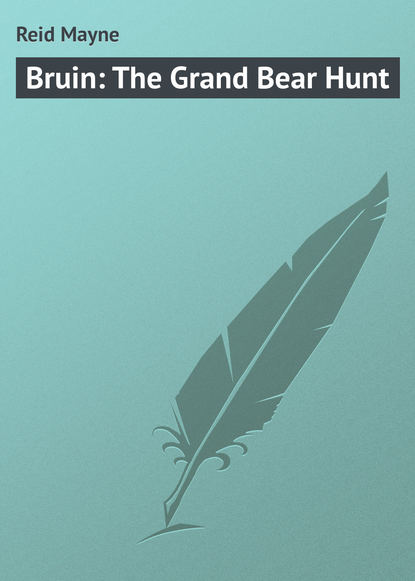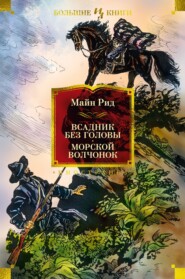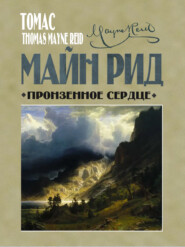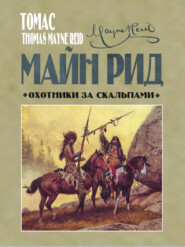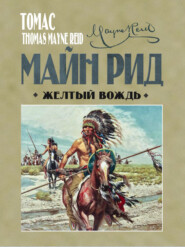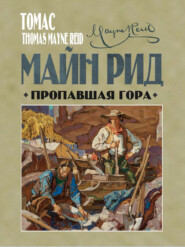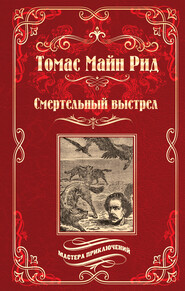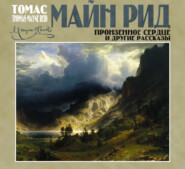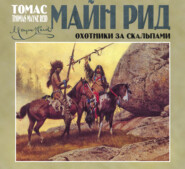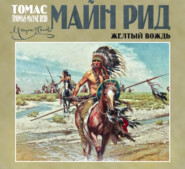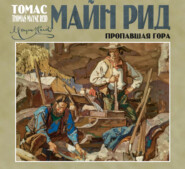По всем вопросам обращайтесь на: info@litportal.ru
(©) 2003-2024.
✖
Bruin: The Grand Bear Hunt
Настройки чтения
Размер шрифта
Высота строк
Поля
Chapter Fourteen.
Ringing the Bear
The bear thus killed was the true ursus arctos, or brown bear – the latter name being given to him from the colour of his fur, which, in ninety-nine cases out of every hundred, is a uniform brown. The name, however, is not appropriate, since there are other brown bears belonging to very different species.
Having secured his robe, as we have seen, the next call of our hunters was to obtain a skin from the body of his black brother. They were well aware that this would not be so easy of accomplishment, from the simple fact, that the ursus niger, or “European black bear,” is one of the rarest of animals – indeed, so few of them are obtained, that out of a thousand skins of the European bear that pass through the hands of the furriers, not more than two or three will be found to be of the black variety.
It is true that they were just in the country where they would be most likely to fall in with one; for it is only in the northern zone of Europe (and Asia also) where the black ones are found. This variety is not encountered in the southern ranges of mountains in the Alps, Pyrenees, and Carpathians. Whether this black bear is a distinct species was not a question with them. They knew that by most naturalists he is recognised as a variety – by some a permanent one. It was therefore certainly included in the conditions of their father’s letter; and a skin must be procured coute qui coute. This done, they would have no further business in Lapland, but might proceed at once to the Pyrenees.
It was not necessary to procure skins of the grey or silver bear, nor that with the white ring round its neck – known as the ringed or collared bear. As Alexis had said, it is acknowledged by all who know the ursus arctos his native haunts, that these are mere accidental varieties. The true “collared bear” (ursus collaris) is not found in Lapland, – only in northern Asia and Kamschatka, and it is he that is known as the “Siberian bear.” The boys therefore were not “bound” by their covenant to procure these varieties; but for all that, they were gratified at going beyond the strict letter of their agreement, which good luck enabled them to do; for while scouring the country in search of the ursus niger, they chanced upon another brown bear, a female, with three cubs, one of which was brown, like the mother; the second had the white ring round its neck, and the third was as grey as a little badger! All four were taken; and the young hunters not only had the gratification of being able to send the different varieties of skins to their father’s museum, but an additional satisfaction was afforded to Alexis, the naturalist, by this grand family capture. It proved incontestably, what he already suspected, and what, moreover, the native peasants and hunters had told him, that the “silver” and “ringed” bears were identical with the ursus arctos.
Notwithstanding their joy at the capture of the old she, and her parti-coloured pets, they were yet very anxious about the black bear. They had hunted all the forests and mountains for miles around, and had even succeeded in killing several other specimens of “Brownie,” but no “Blackie” was to be met with.
It had now got known among the native hunters what they were in search of; and, as they had offered a liberal reward to any one who could guide them to the haunt or den of a real black bear, it was not unlikely they should soon hear of one.
In this expectation they were not deceived. About a week after the offer had been proclaimed, a Finnish peasant (one of the Quäns, as they are called) made his appearance at their headquarters, add announced that he had “ringed” a black bear. It was welcome tidings; and the young Russians at once proceeded to the indicated place.
It may be necessary to explain what the man meant when he told them he had “ringed” the bear; since that is a phrase of specific meaning throughout the countries of Scandinavia. In these countries, when the track of a bear is observed in the snow, it is followed up by the person who has discovered it, with the intention of “ringing” the animal – that is, ascertaining as near as maybe, the locality in which it may have halted from its rambles, and lain down to rest. Of course, if the person thus trailing the bear be a hunter – or if it be a party of hunters actually engaged in the chase, they will keep on until they have found the bear in his den. But in nine cases out of ten, bears are not pursued in this fashion. Generally, their haunt – whether temporary or otherwise – has been ascertained beforehand, by some shepherd or woodcutter, and a party of hunters then proceeds to the spot, and makes a surround of the animal before rousing him from his lair.
This “surround,” however, has nothing whatever to do with the “ringing” of the bear, which is an operation of a different character, and is performed by the party who has first chanced upon the tracks. The mode of proceeding is simply to follow the trail, or spar, of the bear as silently as possible – until the tracker has reason to believe that the animal is not far off. This he discovers by observing that the spar no longer trends in a direct line, but doubles about in zigzags, and backward turnings, upon itself; for when a bear intends to lie down, it is his habit to quarter the ground in every direction, precisely as does the hare before squatting in her form.
Many other animals observe a similar caution before going to rest.
The bear-tracker having reached this point, then leaves the track altogether, and makes a circuit round that part of the forest within which he suspects Bruin to have couched himself. This circuit is of greater or less diameter, according to circumstances – depending on the season of the year, nature of the ground, and a variety of other considerations. While going round this circle, if it should be seen that the track of the bear leads beyond it, then that “ring” is given up, and another commenced further forward. If, on the other hand, the tracker gets round to the place whence he first started, without again coming upon the spar, he concludes that the bear must be lying somewhere within the circumference which he has traced, and will there be found. This, then, is termed “ringing” the bear.
You may wonder why the man does not follow up the spar until he actually reaches the den or lair of the animal. That is easily explained. The tracker is not always a bear-hunter, and even if he were, it would not be prudent for him to approach a bear without assistants, who, by surrounding the animal, should cut off its retreat. Were he to go forward direct to the bear’s hiding-place, Bruin would, in all probability, discover him before he could approach within shot; and, making a bolt, might carry him a chase of ten or twelve miles before stopping. The brown bear often does so.
The tracker, having ascertained the circle within which the animal has made its temporary resting-place, next proceeds to warn the hunters of his village or settlement; and then a large party go out for the destruction of the common enemy. They deploy around the ring, and closing inward, are pretty sure to find the bear either asleep in his den, or just starting out of it, and trying to get off. The “ring” will usually keep for several days – sometimes for weeks – for the bear, especially in winter time, will remain in the vicinity of his lair for long spells at a time. Frequently several days will elapse before any hunters arrive on the ground; but, if the bear should have strayed off in the mean time, his tracks in the snow will still enable them to follow and find him. If, however, fresh snow should have fallen, after the bear has made his exit from the marked circle, then, of course, the search will prove a blank, and Bruin make his escape – at least out of that “ring.”
One of the most singular features of this custom is, that he who has succeeded in “ringing” a bear, is regarded as the lawful proprietor of the animal – or rather of the “ring” – and can dispose of his right to any hunting party he pleases. Of course he cannot guarantee the killing of the bear: that is left to the skill of the hunters, who must take their chance. The tracker only answers for a bear being found within a prescribed circle, of which he gives proof by pointing out the spar. With such conditions, established by long and well-observed custom, it will easily be believed that the woodcutters and other peasants make a market by ringing bears, frequently disposing of the “ring” to the more ardent hunters for a very considerable price! It was just with this view that the Finnish peasant had put himself in communication with our young Russians; and as the bounty they had already offered far exceeded the usual purchase-money in such cases, the Quän at once closed with their offer, and conducted them to the “ring.”
Chapter Fifteen.
Old Nalle
While proceeding towards the ground where they expected to find the bear, their guide informed them that he had not only ringed the animal, but actually knew the den in which it was lying. This was still better: it would not only save them a search, but enable them to encompass the beast on all sides and cut off his retreat – should he attempt to bolt before they could get near.
On approaching the place, therefore, Pouchskin proposed that the three should separate, and, after having deployed into a circle, proceed inward from different directions.
But the guide opposed this suggestion – saying, with a significant smile, that there was no need of such precautions, as he would answer for the bear not leaving his den, until they had all got up as near as they might wish to be.
The hunters wondered at this confidence on the part of their guide, but in a few minutes’ time they had an explanation of it. Going up to a sort of cliff that formed the side of a little stony knoll, the Quän pointed to a hole in the rocks, saying, as he did so: —
“Old nalle is in there.”
Now “nalle” is the nickname of the bear throughout the Scandinavian countries, and our Russian hunters knew this well enough; but that a bear could be inside the little hole, to which their guide had pointed, appeared utterly incredible, and Ivan and Alexis burst into a loud laugh, while Pouchskin was rather inclined to show a little anger about the matter.
The hole which the Quän had pointed out was a crevice between two great boulders of rock. It was about a yard above the ground, upon which they stood; and was certainly not more than six or eight inches in diameter. All round the orifice the rocks were thickly coated with ice; and from the top of the cliff on both sides huge icicles projected downwards, until their tips touched the earth, looking like enormous trunks of elephants, or such as even mammoths might have carried. One of these immense icicles was directly in front of the aperture; while on the ground just below its point stood up a huge mass of an irregular conical shape, the convex surface of which was coated with snow that had lately fallen.
The first impression of the hunters was, that they had been deceived by the cunning Quän. Pouchskin declared that they would not stand being tricked; and at once demanded back the ten rix-dollars which his young masters had paid for the “ring” of the bear.
“It was all nonsense,” he said; “even if there was a cave, no bear could be inside, for the simple reason that none, even the smallest, could possibly have squeezed his carcass through a hole like that; – a cat could hardly have crept into such an aperture. Besides, where were the tracks of the bear? There were none to be seen – neither by the mouth of the hole, nor in the snow outside.”
There were old tracks of the peasant himself and of a dog, but not of a bear.
“It’s a decided take-in,” grumbled Pouchskin.
“Patience, master!” said the Quän. “There is a bear inside for all that; and I’ll prove it, or else return you your money. See my little dog! he’ll tell you old nalle is there. It was he that told me.”
As the Quän said this he let slip a diminutive cur, which he had hitherto held in the leash. The animal, on being set free, rushed up to the hole, and commenced scratching at the ice, and barking in the most furious and excited manner. It certainly proved there was some living creature inside; but how could the Quän tell it was a bear? and, above all, a black bear!
He was interrogated on this point.
“By it,” replied the peasant, taking from his pouch a tuft of long black fur, which was evidently that of a bear; “that is how I know that old nalle’s in the cave, and the colour of the hair tells me that it’s black nalle who’s inside.”
“But how came you by that?” inquired all three in a breath, as the man held the tuft before their eyes.
“Well, masters!” answered the Quän, “you see some jaggy points on the rock, at the top of the hole, there. I found it sticking there, where the bear must have left it, as he was squeezing himself into his cave – that’s how it was.”
“But surely,” said Alexis, “you don’t mean to assert that a bear could pass through such a hole as that? Why, a badger couldn’t get in there, my man!”
“Not now,” said the Quän, “I admit; it’s three months since he went in. The hole was bigger then.”
“Bigger then?”
“Certainly, masters! the heap you see below is only ice. It’s the drip of that great icicle that has frozen up as it fell, and if it were not there you’d see a place big enough for a bear to get in. Ah! sirs! he’s there, I can assure you.”
“Why, he couldn’t get out of himself?”
“That is very true,” replied the peasant; “he’d be safe enough there till a good bit on in the spring. If we hadn’t found him, he would have been obliged to stay in his cave till the sun had thawed that great heap out of his way. It often happens so with the bears in these parts,” added the Quän, without seeming to think there was anything unusual about the circumstance.
What the man said was literally true. The bear had gone into this cleft or cave to take his winter nap, and during the long weeks, while he was thus hybernating, the water, of rain and melting snow, dripping from the top of the cliff, had formed enormous stalactites of ice, with stalagmites as well: since it was one of the latter that had closed up the entrance to the den, and fairly shut him up in his own house!
Not only does this curious accident often occur to Scandinavian bears, but these animals, notwithstanding their proverbial sagacity, frequently become their own jailers. They have a habit of collecting large quantities of moss and grass in front of their caves, which they place right in the aperture; and not inside as a bed to lie upon. Why they do so is not clearly understood. The Scandinavian hunters allege that it is for the purpose of sheltering them from the cold wind, that would otherwise blow up into their chamber; and in the absence of any better explanation this has been generally adopted. The heap soon gets saturated by rain and melting snow, and congeals into a solid mass, so hard that it requires to be cut with an axe before it can be got out of the way; and the bear himself is totally incapable of removing it. The consequence is that it often shuts up the entrance to his winter chamber; and Bruin, on awakening from his sleep, finds himself caught in a trap of his own construction. He has then no other resource but to remain inside till the spring heats have thawed the mass, so that he can tear it to pieces with his claws, and thus effect an exit. On such occasions, he issues forth in a state of extreme weakness and emaciation. Not unfrequently he is altogether unable to clear away the obstacle, and perishes in his den.
On hearing these explanations from the Quän, who appeared to be well acquainted with Bruin’s habits, the young hunters were satisfied that a bear was really in the cave. Indeed, they were not long upon the spot, till they had still more satisfactory evidence of this fact; for they could hear the “sniffing” of the animal, with an occasional querulous growl, as if uttered in answer to the barking of the dog. Beyond doubt, there was a bear inside.
How was he to be got out? That now became the important question.
Chapter Sixteen.
The Staked Enclosure
They waited, for a time, in hopes that he might show his snout at the little aperture, and all three stood watching it, with guns cocked and ready. A good while passed, however, and, as no snout made its appearance, they came to the conclusion that the bear was not to be caught in that simple way. By the snorting growl they could tell that he was at no great distance from the entrance, and they thought a pole might reach him. They tried this, but found that it could be inserted only in a diagonal direction; and although Pouchskin poised in the pole, and bent it round like a rattan, he could not touch wool anywhere; while the bear, though he gave tongue now and then, still kept his place at the further end of the cave.
No other plan offered, except to cut away the icy mass, and set open the mouth of the cavity. If this were done, would Bruin be then likely to come forth? The Quän was confident he would; alleging as his reason, that, in consequence of the spell of warm weather there had been, the bear must have fully shaken off his winter drowsiness, and would no doubt have been abroad long ago, but for the ice preventing his egress from the den. As soon as that should be removed, he would be pretty sure to sally out – for hunger, said the peasant, will bring him forth, if not just at the moment, certainly within an hour or so. At the worst they could wait a while. Moreover, were the ice removed, they might be able to reach him with a pole; and that would be certain to put him in such a rage as would at once tempt him to make a sortie.





